Using Hubble, astronomers have found more black holes in the early universe than previously thought. They went black hole hunting in the landmark Hubble Ultra Deep Field, first revealed in 2004, and in following observations to look for supermassive black holes.
Tag: Black Holes
Bubbling, frothing and sloshing: Long-hypothesized plasma instabilities finally observed
PPPL scientists have observed new details of how plasma interacts with magnetic fields, potentially providing insight into the formation of enormous plasma jets that stretch between the stars.
Astronomers Unveil Strong Magnetic Fields Spiraling at the Edge of Milky Way’s Central Black Hole
A new image from the Event Horizon Telescope (EHT) collaboration— which includes scientists from the Center for Astrophysics | Harvard & Smithsonian (CfA)— has uncovered strong and organized magnetic fields spiraling from the edge of the supermassive black hole Sagittarius A* (Sgr A*). Seen in polarized light for the first time, this new view of the monster lurking at the heart of the Milky Way Galaxy has revealed a magnetic field structure strikingly similar to that of the black hole at the center of the M87 galaxy, suggesting that strong magnetic fields may be common to all black holes. This similarity also hints toward a hidden jet in Sgr A*.
Scientists closer to solving mysteries of universe after measuring gravity in quantum world
Scientists are a step closer to unravelling the mysterious forces of the universe after working out how to measure gravity on a microscopic level.
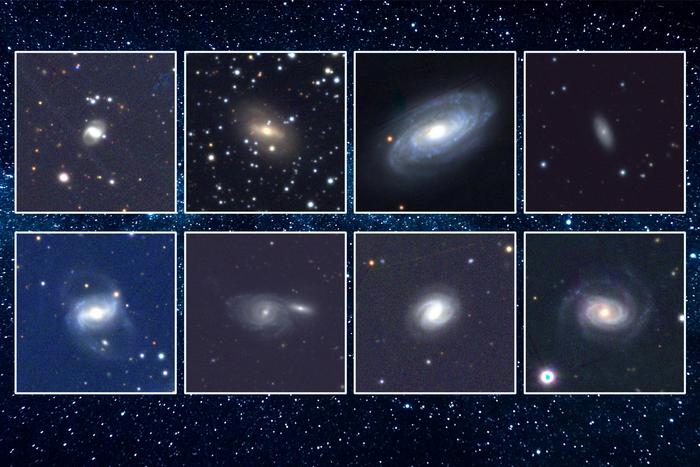
Astronomers spot 18 black holes gobbling up nearby stars
The detections more than double the number of known tidal disruption events in the nearby universe.
New research shows quasars can be buried in their host galaxies
Quasars can be obscured by dense clouds of gas and dust in their host galaxies, not just by donut-shaped rings of dust in the close vicinity of the black hole.
Black holes are messy eaters
New observations down to light-year scale of the gas flows around a supermassive black hole have successfully detected dense gas inflows and shown that only a small portion (about 3 percent) of the gas flowing towards the black hole is eaten by the black hole. The remainder is ejected and recycled back into the host galaxy.
Department of Energy Announces $137 Million for Research on High Energy Physics
Today, the U.S. Department of Energy (DOE) announced $137 million in funding for 80 projects in high energy physics. The scope of the research spans the full gamut of topics in experimental and theoretical high energy physics.
Supermassive Black Holes Alter Galactic Chemistry
New research shows that the supermassive black hole at the center of a galaxy can have a direct impact on the chemical distribution of the host galaxy. This provides another piece of the puzzle for understanding how galaxies evolve.
Hunting for Supermassive Black Holes in the Early Universe
Supermassive black holes (SMBHs) – black holes with masses exceeding a million times that of the Sun – are known to prevail in the universe today.
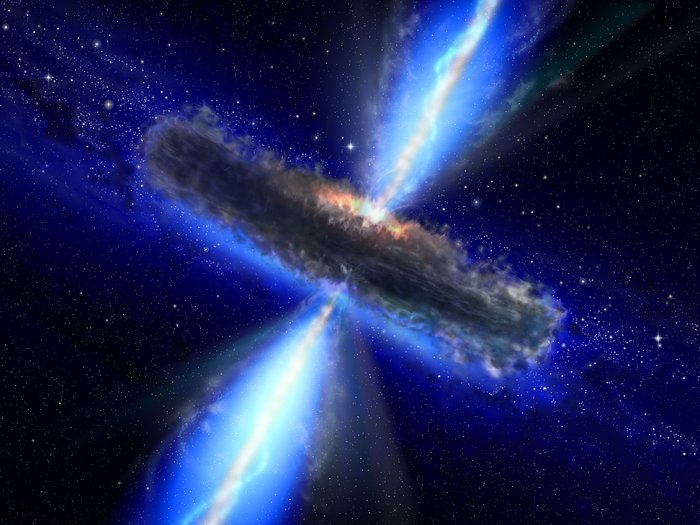
Hidden supermassive black holes brought to life by galaxies on collision course
Astronomers have found that supermassive black holes obscured by dust are more likely to grow and release tremendous amounts of energy when they are inside galaxies that are expected to collide with a neighbouring galaxy.
Científicos logran mejorar la nitidez de la primera imagen de un agujero negro
Un equipo de científicos, que incluyó a un astrónomo de NOIRLab de NSF, desarrolló una nueva técnica de aprendizaje automático (machine-learning) para mejorar la definición y la nitidez de imágenes de interferometría de radio. Para demostrar el poder de su nueva técnica, a la que llamaron PRIMO, el equipo creó una nueva versión, en alta definición, de la icónica imagen captada por el Telescopio Event Horizon del agujero negro supermasivo ubicado al centro de Messier 87, una galaxia elíptica gigante localizada a unos 55 millones de años luz de la Tierra.
A Sharper Look at the First Image of a Black Hole
A team of researchers, including an astronomer with NSF’s NOIRLab, has developed a new machine-learning technique to enhance the fidelity and sharpness of radio interferometry images. To demonstrate the power of their new approach, which is called PRIMO, the team created a new, high-fidelity version of the iconic Event Horizon Telescope’s image of the supermassive black hole at the center of Messier 87, a giant elliptical galaxy located 55 million light-years from Earth.
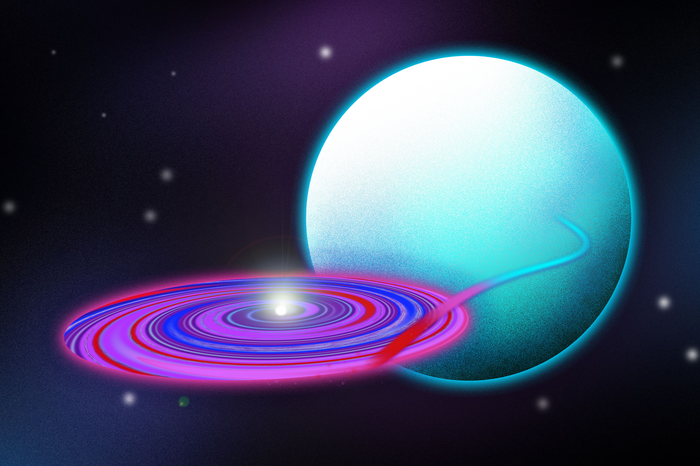
Scientists map gusty winds in a far-off neutron star system
An accretion disk is a colossal whirlpool of gas and dust that gathers around a black hole or a neutron star like cotton candy as it pulls in material from a nearby star. As the disk spins, it whips up powerful winds that push and pull on the sprawling, rotating plasma. An accretion disk is a colossal whirlpool of gas and dust that gathers around a black hole or a neutron star like cotton candy as it pulls in material from a nearby star. As the disk spins, it whips up powerful winds that push and pull on the sprawling, rotating plasma.
Hubble Unexpectedly Finds Double Quasar in Distant Universe
Hubble has found a rare pair of quasars inside two merging galaxies. These brilliant beacons are powered by supermassive black holes. The galaxies will eventually merge—and so will the quasars. This will result in an even more powerful black hole.
New discovery sheds light on very early supermassive black holes
Astronomers from the University of Texas and the University of Arizona have discovered a rapidly growing black hole in one of the most extreme galaxies known in the very early Universe.
Researchers spot rare luminous jet spewed by supermassive black hole
A University of Minnesota Twin Cities assistant professor is co-leading a team that discovered a bright optical flare which may help researchers better understand the physics of supermassive black holes billions of light years away.
Astronomers Discover Closest Black Hole to Earth
Astronomers using the International Gemini Observatory, operated by NSF’s NOIRLab, have discovered the closest-known black hole to Earth. This is the first unambiguous detection of a dormant stellar-mass black hole in the Milky Way. Its close proximity to Earth, a mere 1600 light-years away, offers an intriguing target of study to advance our understanding of the evolution of binary systems.
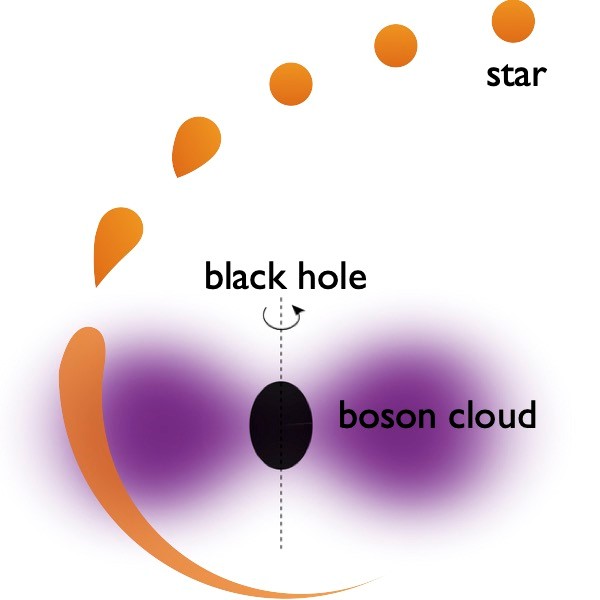
Scientists Take Another Theoretical Step to Uncovering the Mystery of Dark Matter, Black Holes
A study by a team of scientists including three from Stony Brook University proposes a novel method to search for new particles not currently contained in the standard model of particle physics. Their method, published in Nature Communications, could shed light on the nature of dark matter.
Astronomers May Have Detected a ‘Dark’ Free-Floating Black Hole
If, as astronomers believe, the death of large stars leave behind black holes, there should be hundreds of millions of them scattered throughout the Milky Way galaxy. The problem is, isolated black holes are invisible.
Black Holes Helped Quenching Star Formation in the Early Universe
While some galaxies form stars at a continuous rate, others die out and lead a more passive life.
Finding coherence in quantum chaos
A theoretical breakthrough in understanding quantum chaos could open new paths into researching quantum information and quantum computing, many-body physics, black holes, and the still-elusive quantum to classical transition.
New Discovery About Distant Galaxies: Stars Are Heavier Than We Thought
A team of University of Copenhagen astrophysicists has arrived at a major result regarding star populations beyond the Milky Way.
LLNL-led team uses machine learning to derive black hole motion from gravitational wave data
A team including a Lawrence Livermore National Laboratory (LLNL) mathematician and collaborators at the University of Massachusetts, Dartmouth and the University of Mississippi, has developed a machine learning-based technique capable of automatically deriving the motion of binary black holes from raw gravitational wave data.
Gamma rays and neutrinos from mellow supermassive black holes
The Universe is filled with energetic particles, such as X rays, gamma rays, and neutrinos. However, most of the high-energy cosmic particles’ origins remain unexplained.
Three PPPL scientists win competitive awards to conduct frontier plasma science work
World-class expertise in the study of plasma — the hot, charged state of matter composed of free electrons and atomic nuclei, or ions, that makes up 99 percent of the visible universe — has won frontier science projects for three physicists at PPPL.
“X-RAY MAGNIFYING GLASS” ENHANCES VIEW OF DISTANT BLACK HOLES
Using a special “magnifying glass,” astronomers have zoomed into black holes that otherwise would be too faint to detect.
Science & ROGER PENROSE – A Free Online Webinar August 3 – 6, 2021
Free Live Webinar
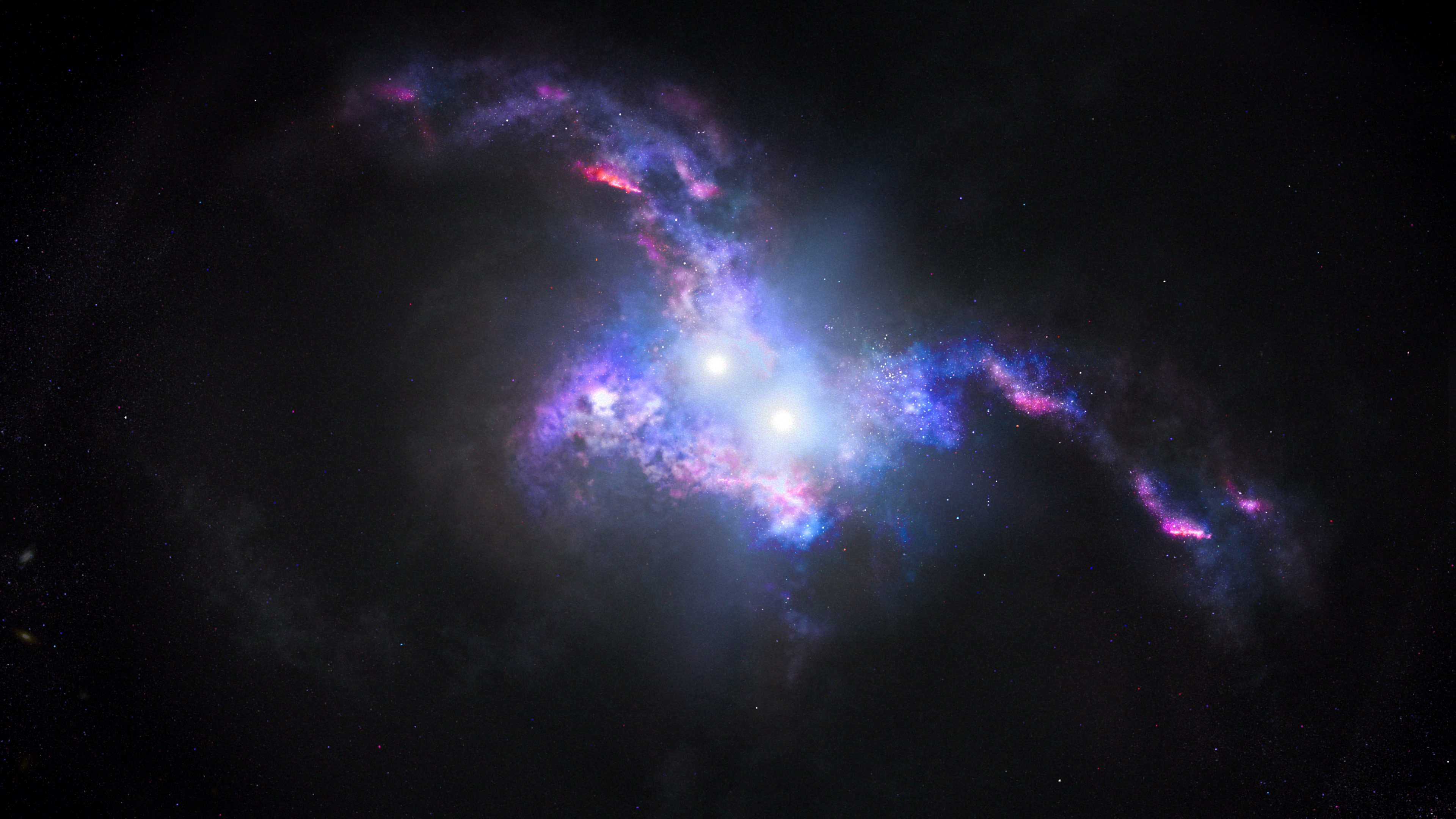
Hubble Spots Double Quasars in Merging Galaxies
Astronomers are “seeing double,” uncovering two close pairs of ancient quasars that reside at the centers of merging galaxies. These brilliant light beacons are powered by supermassive black holes feeding on material, unleashing a torrent of radiation.
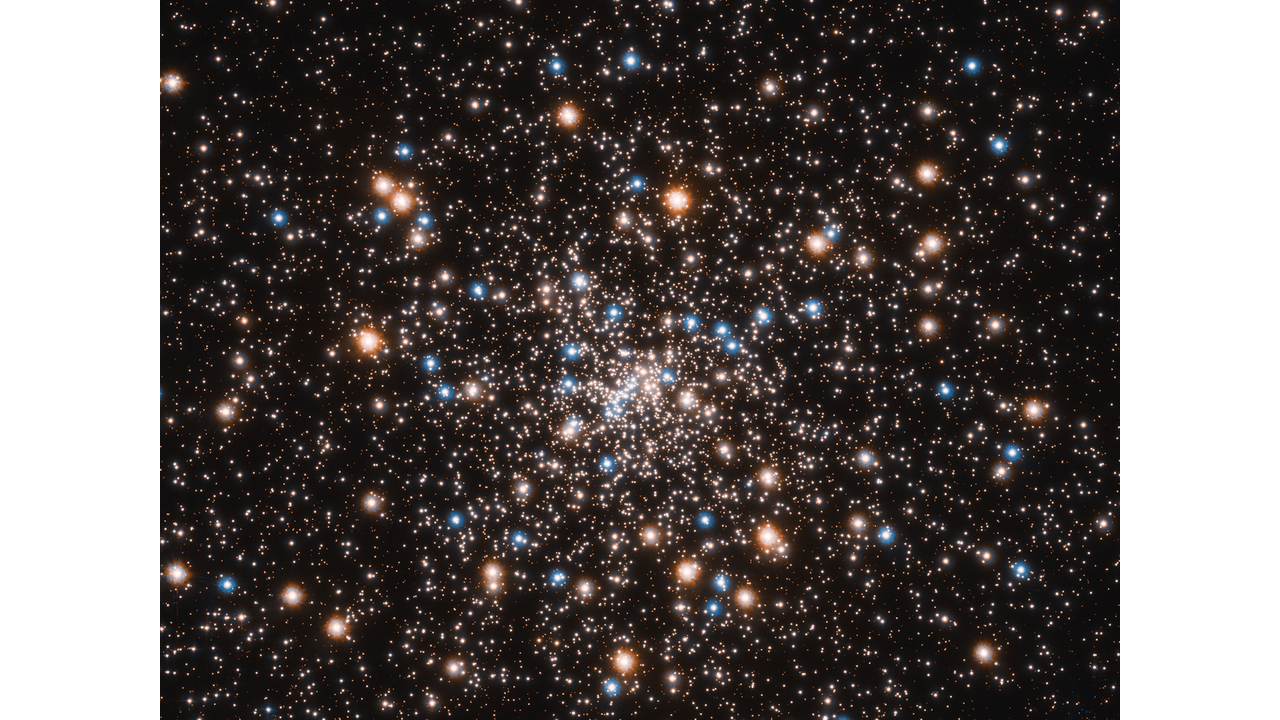
Hubble Uncovers Concentration of Small Black Holes
Astronomers using the Hubble Space Telescope in their hunt for a massive black hole at the heart of the globular cluster NGC 6397 found something they weren’t expecting: a concentration of smaller black holes lurking there instead. This is a new twist on the search for intermediate-mass black holes. They are the long-sought “missing link” between supermassive black holes and stellar-mass black holes.

How Large Are Neutron Stars?
An interdisciplinary research team has identified new, narrower limits on the radii of neutron stars—close to 11 kilometers. The novel approach combined two sources of information: the first gravitational-wave and electromagnetic observations of a binary neutron-star collision, and modern nuclear-theory calculations of uncertainty. The results suggest that neutron-star black-hole collisions can swallow neutron stars whole.
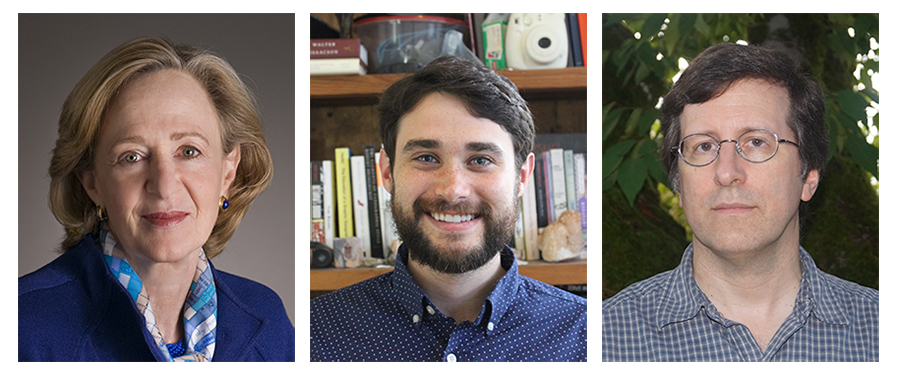
American Institute of Physics Announces 2020 Science Communication Award Winners
The American Institute of Physics recognizes the winners of the 2020 Science Communication Awards for their topical works on reshaping our world, recognizing forgotten women in science, searching for knowledge, and hunting down black holes. The 2020 winners are Susan Hockfield, Joshua Sokol, Curtis Manley, and Catalyst.

AIP Congratulates 2020 Nobel Prize Winners in Physics
The 2020 Nobel Prize in physics was awarded to Roger Penrose, Reinhard Genzel, and Andrea Ghez, for their work on black holes, described by the Nobel committee as “the darkest secrets in the universe.” To help journalists and the public understand the context of this work, AIP is compiling a Nobel Prize resources page featuring relevant scientific papers and articles, quotes from experts, photos, multimedia, and other resources. The page will be updated throughout the day.
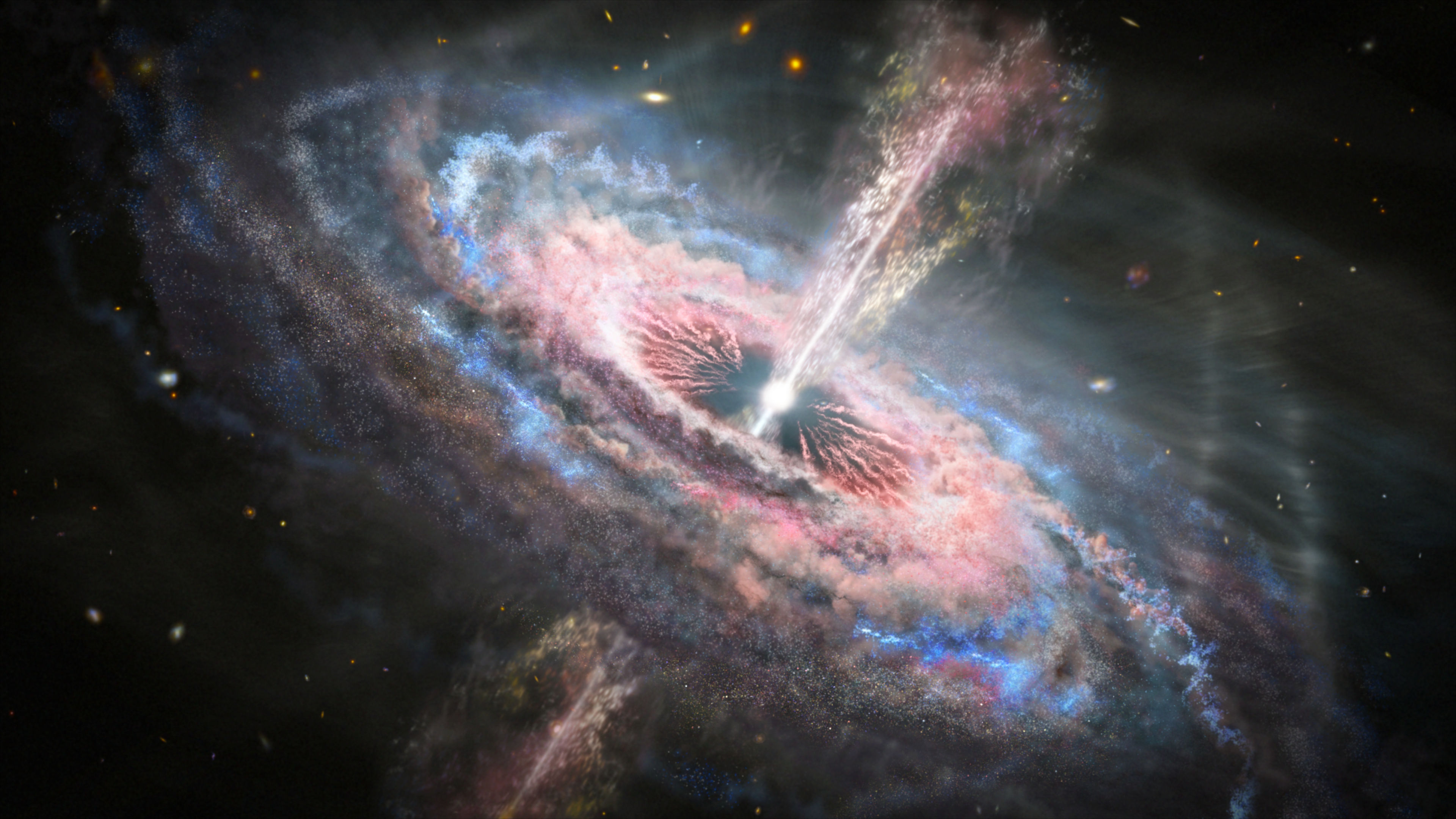
Quasar Tsunamis Rip Across Galaxies
A team of astronomers using Hubble have found the most energetic outflows ever witnessed in the universe. These outflows emanate from quasars and tear across interstellar space like tsunamis, wreaking havoc on the galaxies in which the quasars live.
Scientists may have discovered a whole new class of black holes
Scientists have been trying to build a census of all the black holes in the Milky Way galaxy, but new research shows they might have been missing an entire class of black holes that they didn’t know existed, a study publishing 10/31/19 in Science shows.